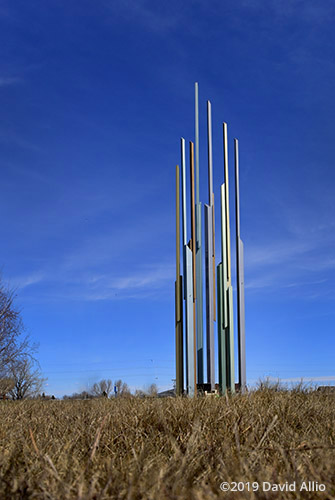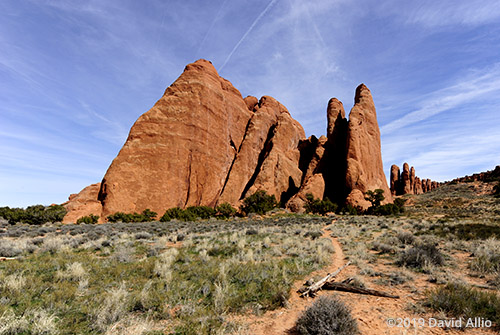
Northern Lights Tower – Americana Collection
Cast on a plaque at the base of the Northern Lights Tower is the following: "Dedicated to one of the Northern Plains most stunning natural phenomena, the spectacular beauty of the Aurora Borealis." Also listed on the plaque are various sponsors. However, no reference or credit is given to the artist or designer of this 88.5 foot tall multicolored steel sculpture located about a football field to the east of a fieldstone marker indicating the geographical center of North America in Rugby, North Dakota.
camera: Nikon D850 | lens: AF Nikkor Zoom 24-70mm f/2.8G
focal length: 24mm | exposure: f/11 – 1/1000 – ISO 500

Sand Dune Arch and Broken Arch Trail – Americana Collection
The Sand Dune Arch and Broken Arch Trail is a narrow path of sand and gravel amidst desert scrub leading to these Entrada Sandstone fins within Arches National Park. Sand Dune Arch is hidden between the towering rock slabs theoretically formed by subsidence, weathering, and erosion. According to an official pamphlet, geologists see circumstantial evidence that the Colorado Plateau was once a salt flat. Over millions of years flooding allowed sediment to build up and form a rock layer. As that sandstone is subjected to environmental stresses, blocks of rock erode. Many blocks simply disintegrate under the constant uneven stress but the "better balanced" blocks become arches.
camera: Nikon D3 | lens: AF Nikkor Zoom 14-24mm f/2.8G
focal length: 16mm | exposure: f/13 – 1/500 – ISO 250

The Organ – Americana Collection
The Organ is an example of the many Entrada Sandstone fins within Arches National Park.
camera: Nikon D3 | lens: AF Nikkor Zoom 14-24mm f/2.8G
focal length: 24mm | exposure: f/13 – 1/500 – ISO 250


